"Tails of the Past" (2023) is an engraving with Khmer script. The script is made by bending iron wires and hammering the script onto the aliminium. The work is developed in Yogyakarta, Indonesia.
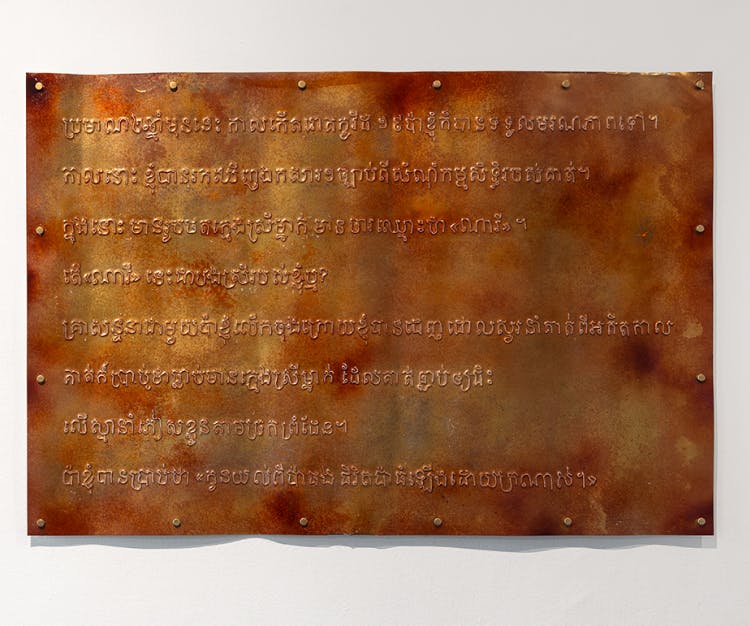
For this work, I recreated a 10th-century Javanese engraving using contemporary Khmer script. In my native tongue, which I am illiterate in, I recount a recent challenging historical familial narrative where the truth has been made inaccessible to me.
My commitment to crafting an engraving from scratch, meticulously hammered by hand, and the sharing of such a personal story serve as my commentary on the capricious nature of historiography and its personal and political dimensions, along with the technologies ensuring its survival.
Through this piece, I ponder: What happens to your psyche if you're never told the truth? What transpires when stories are erased? Who bears the weight of this burden?
To view the translation of this story, please visit the exhibition at TENT, Rotterdam, where this work is on display, or email me (samboleaptol@gmail.com). Strangely, this story is too sensitive to be broadcasted on this website.
A short explainer of the work Tail of the Past.
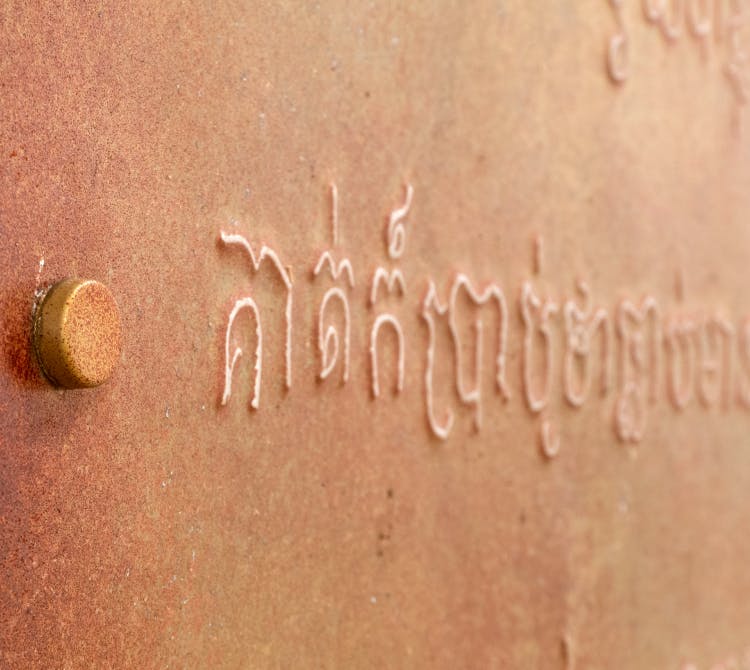
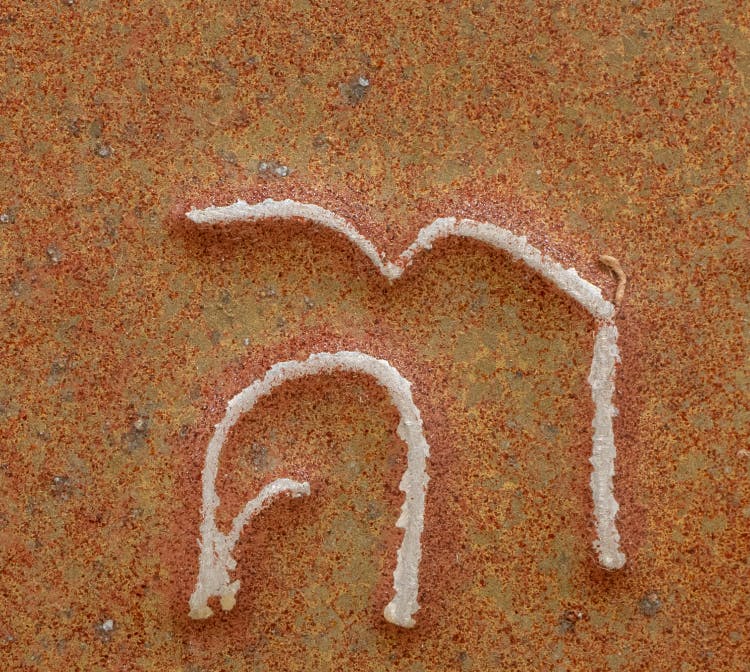
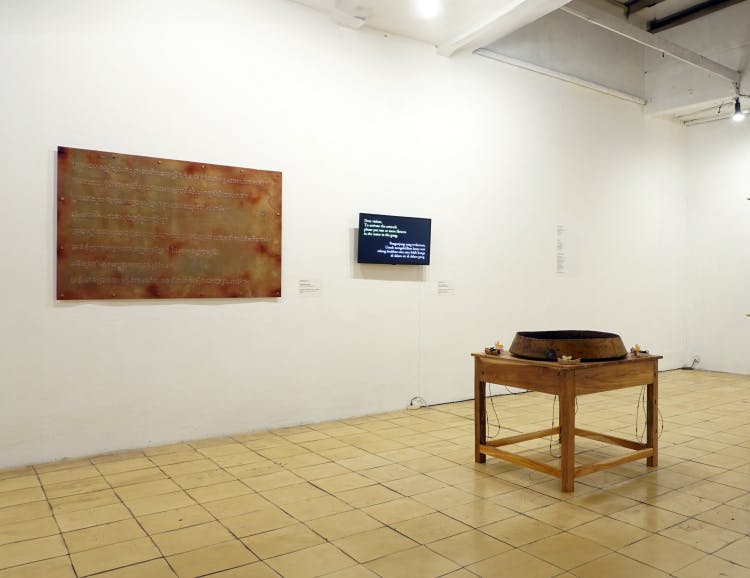
Research
During the first half of my residency in Yogyakarta, my journey was influenced by a resemblance between the Javanese and Khmer cultures. I kept wondering about the depth of these connections and whether there had been a significant period of exchange and migration between the two civilizations.
I (re)discovered that King Jayavarman II, who had started the Khmer empire in 802AD, had spent significant time in Java before establishing the Khmer empire. I found ancient Javanese administrative slates mentioning Khmers as foreigners on the island, indicating their presence in significant numbers.
And by accident, I stumbled upon the rumor suggesting that the Kalang people, a subethnic Javanese group, were descendants of Khmers. View the video below to gain a sense of this rumour.
To delve deeper into this historical aspect, I invited the history enthusiast Yoga Efendi to speak at my public event at Cemeti. We discussed various periods of exchange, showcasing inscriptions and artistic resemblances, such as commonalities between our dances, statues, and architectural structures.
We speculated that Khmers might have come to Java to possibly contribute to the construction of temples like Borobudur. Both Yoga and I are ardent Cambodia enthusiasts, Buddhists and temple fanatics, so our conversation was inevitably colored by our biased fantasies.
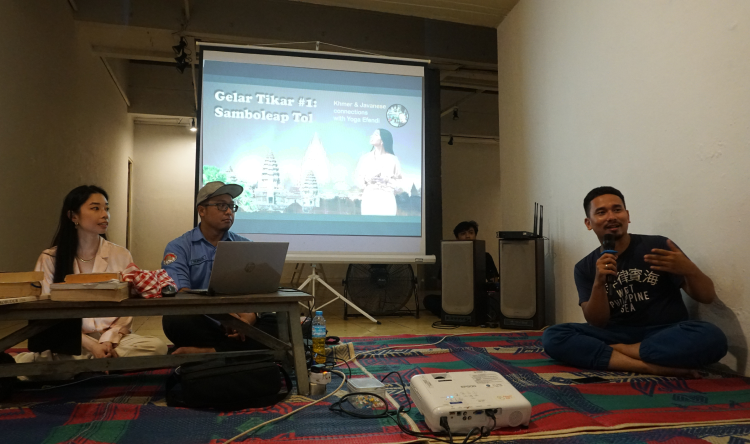
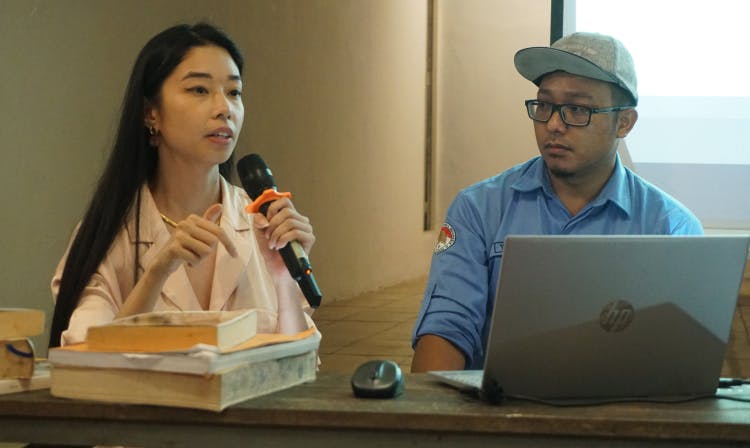
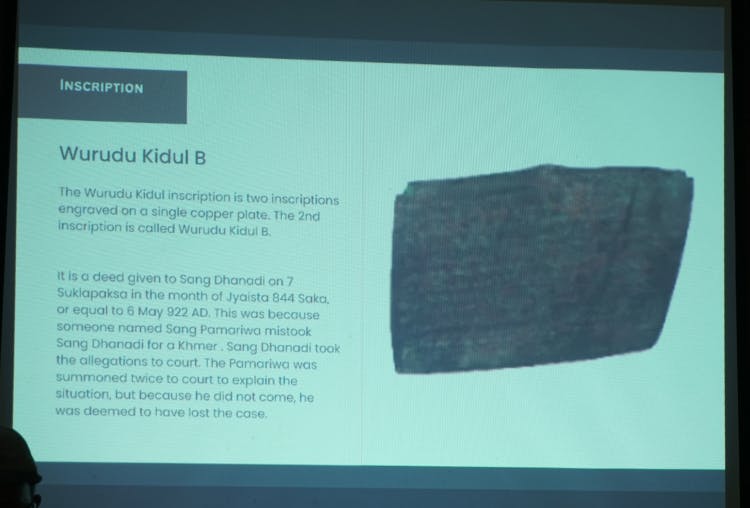
Script
One particular slate caught my attention for a long time: a 10th-century inscription in Old Javanese at Museum Sonobodoyo. The stone inscription had nothing to do with Khmers; it's just that Old Javanese resembled the Khmer script so much.
As a diasporic Khmer, I struggled with the Khmer script. To me, Khmer is the most beautiful script in the world. However, perhaps because of this beauty, it also broke my heart. I tried so many times to read and write it, but to no avail. Thus, it stood as a barrier between myself and my origins.
Through my assocation with Khmer script, I found a connection with Javanese people from the 10th century, and with the Javanese of the now, who like me cannot read their script of origin. I was sadly reminded of the reality where I still can't understand current Khmer affairs or my late dad's handwriting.
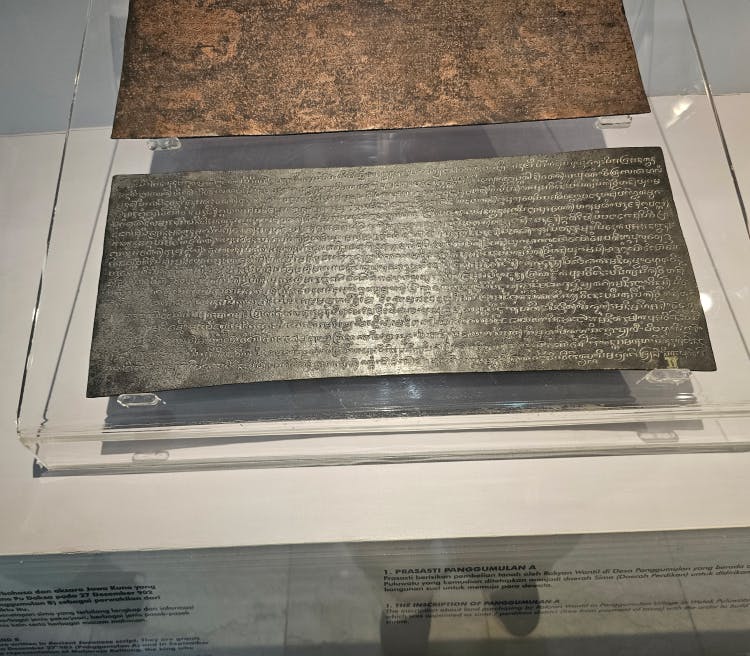
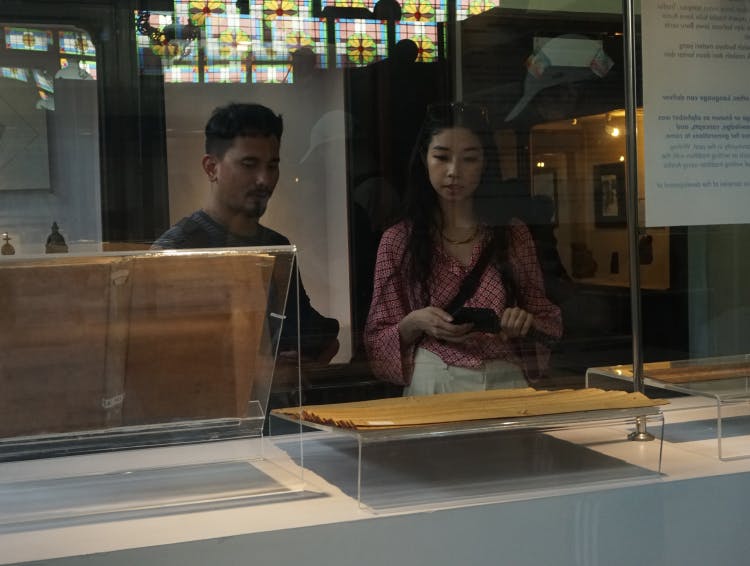
In response to these feelings, I decided to build an inscription of my own, using my bare hands. Yogyakartan artist Ramadhan Arif Fatkhur taught me how to create an embossing in aluminum by bending iron wires into a mirrored script.
It was a time-consuming and painstaking process, where I would spend 15 minutes bending wire for each word, or 2 hours per sentence, despite the fact that I wrote the text in under 5 minutes. The text was translated over Instagram by a Khmer friend, Pitou Keo.
A post exhibition booklet has been developed capturing the development of this works and others. Please view the digital version here. A printed version with 300 copies will be released soon.
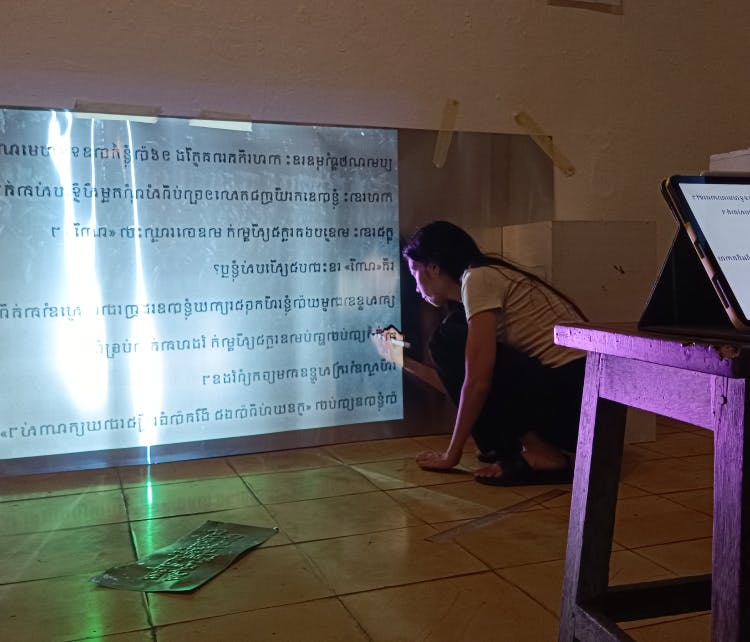
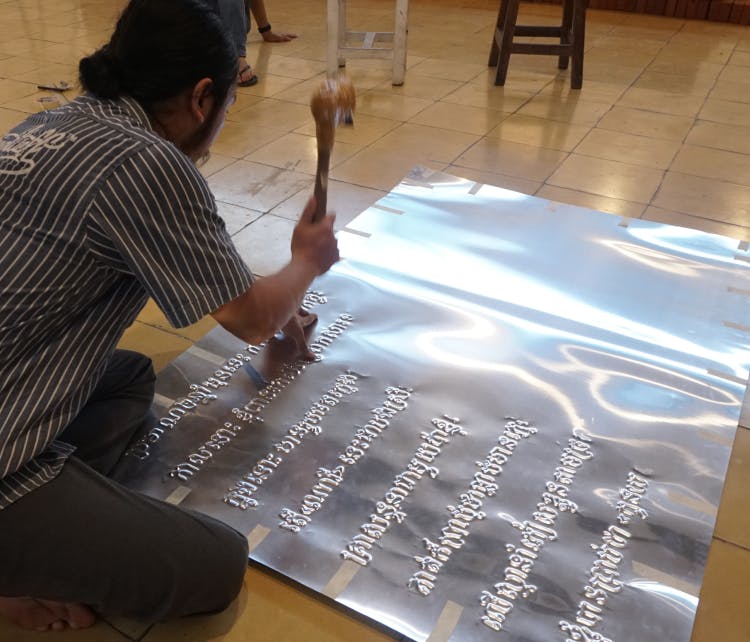
Made possibly by:
"Tails of the Past" was developed during a 3 month residency at Cemeti Institute for Arts and Society, Yogyakarta Indonesia, funded by the Mondriaanfonds. The work was developed with the help of: Ramadhan Arif Fatkhur, Pitou Keo and Muhammad Eva Nuril Huda.
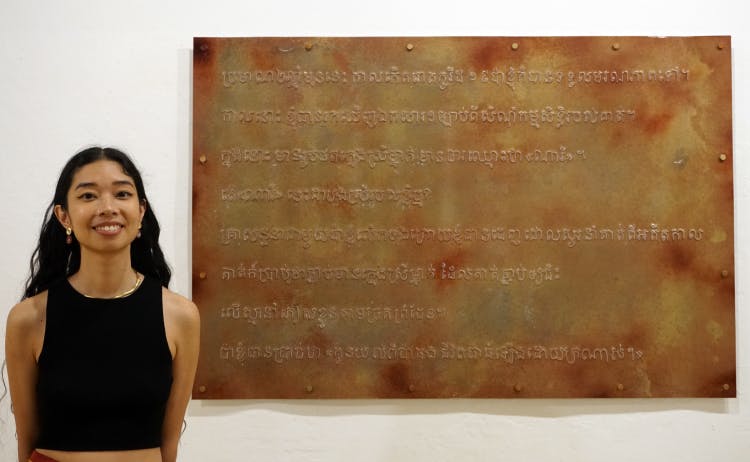
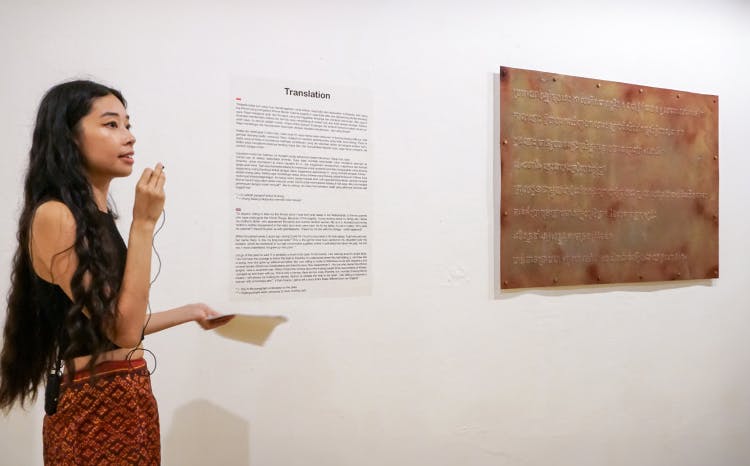
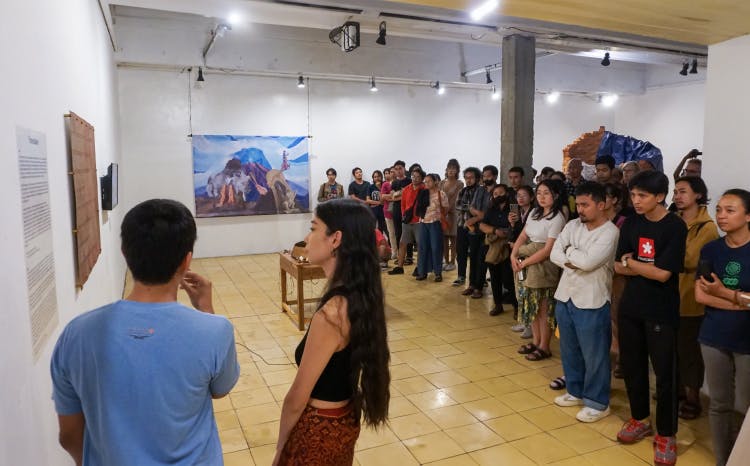
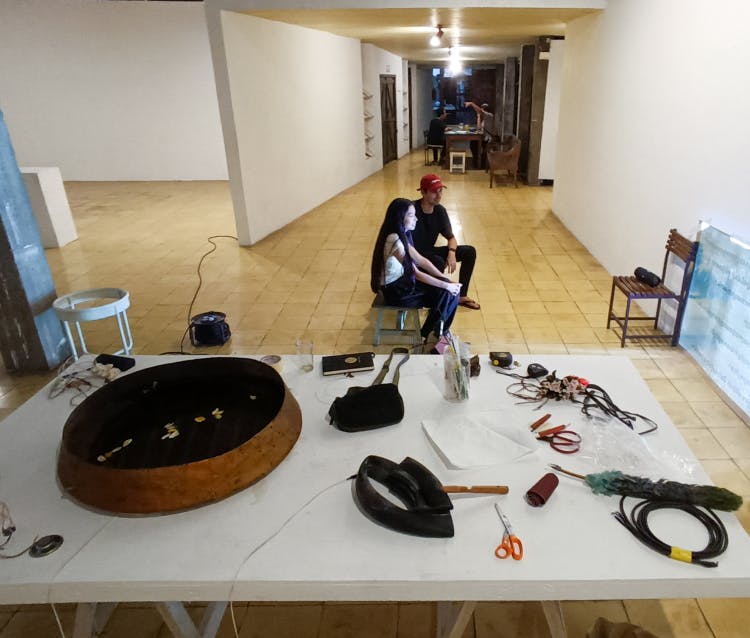
Photography by Syahidin Pamungkas
Shows
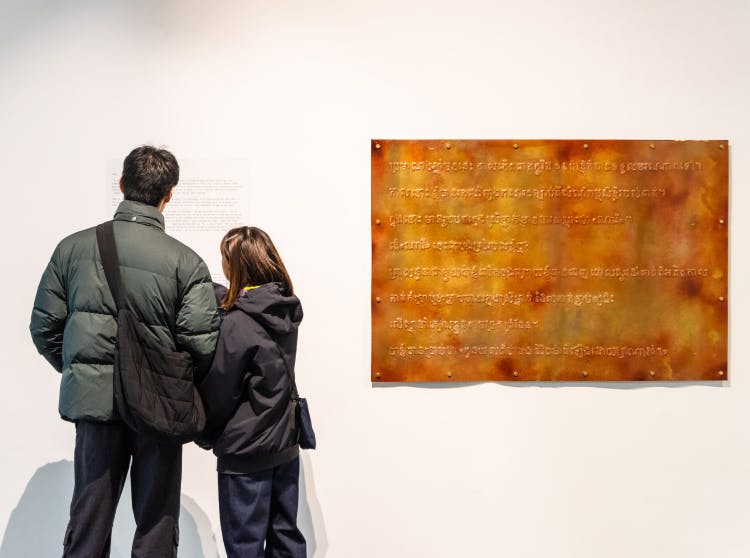
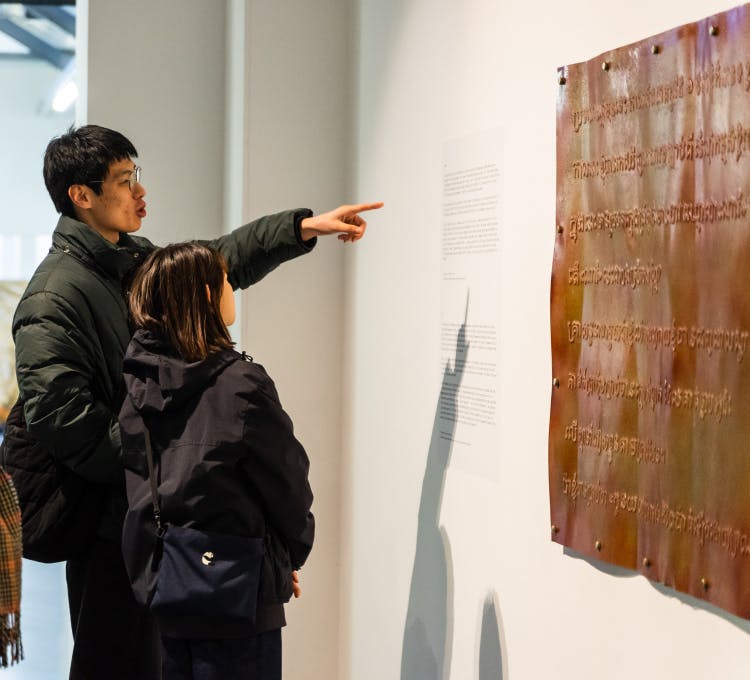
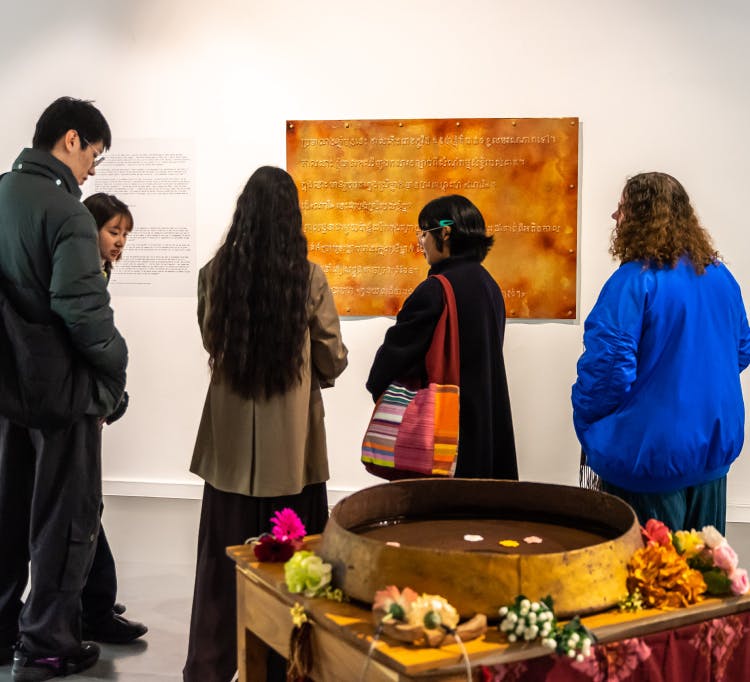
Photography by Steven Maybury
Tails of the Past (2023) was on show at Cemeti Institute for Arts and Society in June 2023 in Yogykarta. It was shown again as part of the Dolf Henkes Prijs 2023 groupshow at TENT in Rotterdam, where it won the 10th edition of the Dolf Henkes Prijs. It was on show for more than 4 month at TENT and closed in January 2024. This Rotterdam iteration of the work includes a Dutch and English translation, wheras the Jogja iteration included a Bahasa Indonesia and English translation.
This video is a tour of the TENT show, including two more works (Sathu Studio and Dharma Songs v2). Below is a 3D scan of the show, which allows you to see the works up close.

